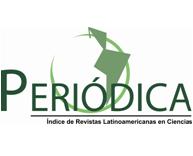OPPORTUNITIES OF POWER GENERATION IN THE CUBAN ENERGY MATRIX FROM A LIFE CYCLE APPROACH
Keywords:
life cycle analysis, renewable energy, energy matrix, molassesAbstract
Introduction:
In Cuba there is a clear political will, the current energy scheme requires to be transformed to produce a cleaner, more diverse and efficient energy. This has led to the incorporation of biomass as an energy generation, a challenge with two fundamental
aspects, the modernization of energy generation from sugarcane bagasse and the implementation of bioelectric plants in the country.
Objective:
To propose opportunities for improvements in cogeneration that contributes to strengthening the Cuban energy matrix from a life cycle approach.
Materials and methods:
A diagnosis of the existing conditions in the country was made through the life cycle analysis using the SimaPro Software and the Recipe Midpoint methodology.
Results and discussion:
The predominance of electricity generation from non-renewable sources was demonstrated, an aspect that can be modified due to the use of renewable energies. If a drying system is introduced in the sugar mill, the technical and economic feasibility of
its modification is demonstrated by reaching a generation of 20,693 MWh/succession above the current system.
Conclusions:
With the life cycle analysis, the environmental impacts associated with each impact category are quantified and the contribution percentages of each source of energy source are analyzed, with fuel oil and crude oil being the largest contributors. It was shown that with the incorporation of bagasse drying in plants not converted into bioelectrics plants,
a reduction of between 5 and 16% is achieved in all impact categories.
Downloads
Downloads
Published
How to Cite
Issue
Section
License

This work is licensed under a Creative Commons Attribution-NonCommercial 4.0 International License.




















